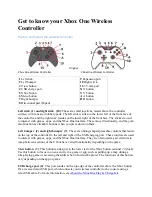
2070-6A Manual
8
2070-6Asm v2 Standard Manual A00886-A.doc
SW4 Digital Control Switch
Switch SW4 controls the polarity of the
signals coming off the backplane of the
2070. This switch is needed because of
the different interpretations of the
CALTRANS Specification concerning
the back plane signals. This switch will
allow the 2070-6A to mate with any 2070
Controller.
The SW4 switch has 5 positions with
which you can control the polarity of all
of the control and data signals. The
following table defines the switch
positions.
POS Function Inverted
RXD
and TXD
Modem
Operatio
n
1 RXD
OFF
ON
2 CTS
ON
ON
3 DCD
ON
ON
4 TXD
ON
OFF
5 RTS
OFF
OFF
SW4 should normally be set to the
Modem column and that is the way the
modem is shipped.
TYPICAL SYSTEM
OPERATION
In systems with FSK Modems certain
control signals must be used correctly to
assure reliable communication.
4-WIRE FULL DUPLEX
systems use
2 pairs of wire to interconnect the Master
and Slave Controllers. One pair carries
data from the Master to the Local
Controllers and the second pair carries
data back from the Local Controllers to
the Master. Audio Out from the Master
connects to all of the Local Controllers’
AUDIO INs. All of the Local
Controllers’ AUDIO OUTs are connect
together and returned to the Master
AUDIO IN.
2-WIRE HALF DUPLEX
systems carry
the transmitted data from the Master and
Local Controllers on the
same
pair. All
of the AUDIO OUTs of the system are
connected together.
With a 4-wire full duplex system you
have to be concerned with the Local
Controllers
not
transmitting at the same
time since they all share the same wire.
With the 2-wire Half Duplex system you
also cannot have the Local Controllers
talking over the top of the Master. There
is also less time between transmissions to
let the energy on the line dissipate. This
extra energy on the line can interfere with
the receiver circuits of the FSK Modem.
These factors make the 2-wire half
duplex system more error prone and
slower than a 4-wire half duplex system
of the same length and wire type.
Proper use of the Handshake or control
signals is essential to proper operation of
an FSK Modem system. These signals
are RTS, CTS, and DCD.
RTS is an input to the Modem and
Turns the transmitter ON.
If RTS is
active, the Modem is transmitting
something. The Modem starts
transmitting the MARK frequency
(11,200 Hz) when the oscillator stabilizes
and continues to transmit MARK until a
SPACE is sent to the TXD Pin.































